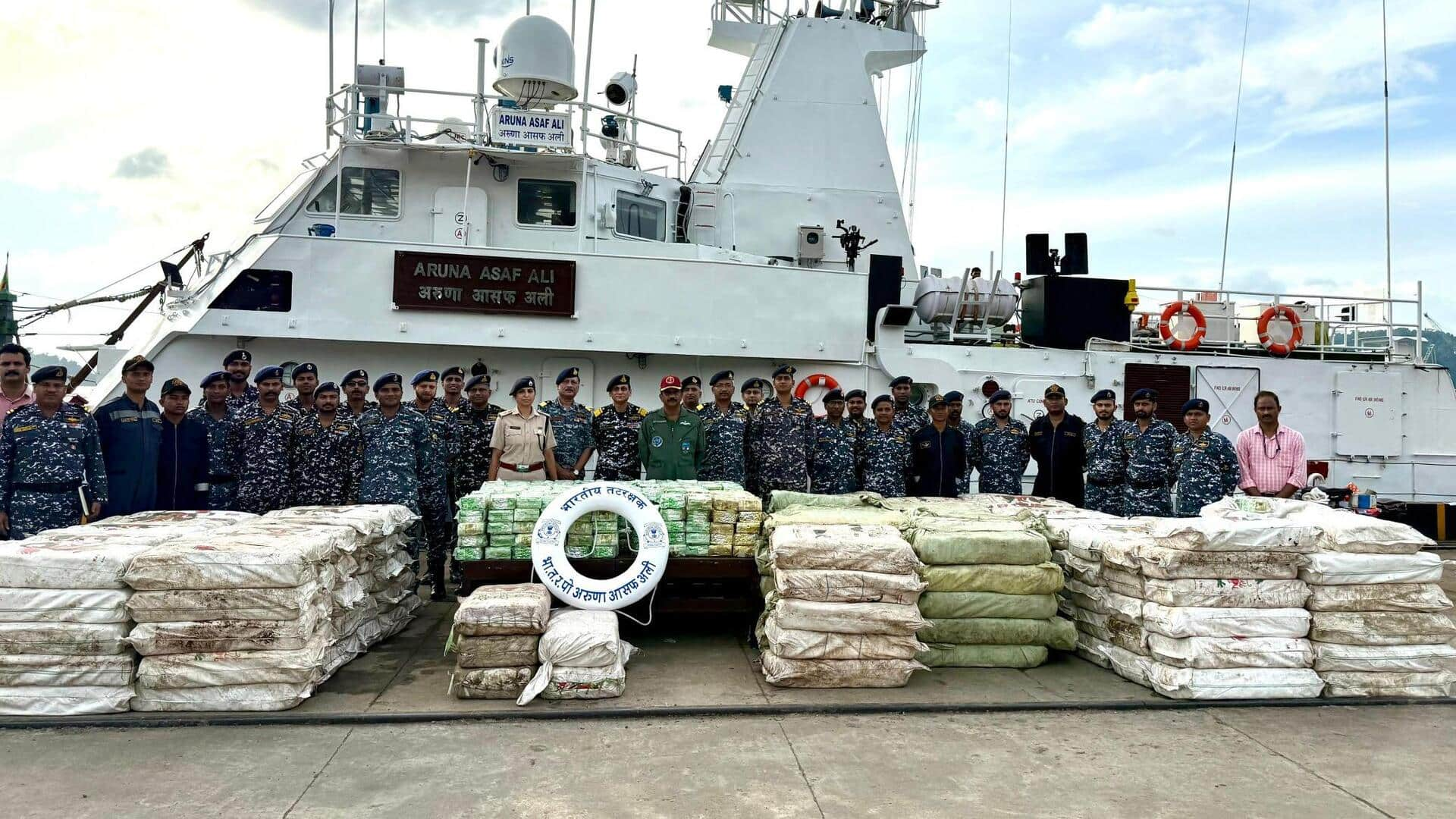
How India is combating drug trade in Indian Ocean
What's the story
In a major crackdown, the Indian Coast Guard recently intercepted a Myanmarese fishing vessel off the Andaman and Nicobar Islands, seizing nearly 6,000kg of methamphetamine. This was India's largest-ever maritime drug seizure, with the narcotics valued at around ₹36,000 crore. The incident is one of the many that highlights the rising problem of international drug trafficking through the Indian Ocean.
Drug routes
Indian Ocean: A hotspot for global drug trafficking
The United Nations Office on Drugs and Crime (UNODC) lists the "Golden Crescent" and the "Golden Triangle" as the main drug-producing areas impacting this region. The Golden Crescent (Afghanistan, Iran, and Pakistan) is among the oldest illicit opium sources. Drugs from these areas travel via three routes: Balkan, northern, and southern. The southern route passes through the Indian Ocean, branching into western and eastern paths to various global destinations.
Countermeasures
India's strategic response to maritime drug trafficking
To address these security concerns, India has set up information fusion centers in Singapore, Madagascar, and on its own soil. These centers bolster maritime domain awareness by collating information from multiple sources to detect maritime crimes. The Coast Guard is in charge of upholding the law in India's territorial seas, having been given authority by the Narcotic Drugs and Psychotropic Substances Act, 1985.
Naval operations
Indian Navy's role in combating high seas drug trafficking
The Indian Navy also tackles crimes on the high seas where traffickers frequently take advantage of jurisdictional loopholes. In February 2024, it seized approximately 3,300kg of drugs from a ship off Gujarat's Porbandar in association with the Narcotics Control Bureau. The Navy also collaborates with international forces such as the 46-nation Combined Maritime Forces (CMF) to bolster its capability against transnational threats.
Tech advancements
Technology and intelligence-sharing bolster India's anti-drug efforts
Driven by the Atmanirbhar Bharat, the Indian Navy is rapidly integrating technology such as artificial intelligence (AI), autonomous systems, and cybersecurity, establishing itself as a technologically advanced marine force. The Navy's adoption of unmanned systems demonstrates its technical progress. The Neerakshi Autonomous Underwater Vehicle (AUV), intended for underwater surveys and mine detection, makes it an essential component of Intelligence, Surveillance, and Reconnaissance (ISR) missions. The Navy increases its operating capabilities by utilizing these autonomous technologies without putting humans at risk.